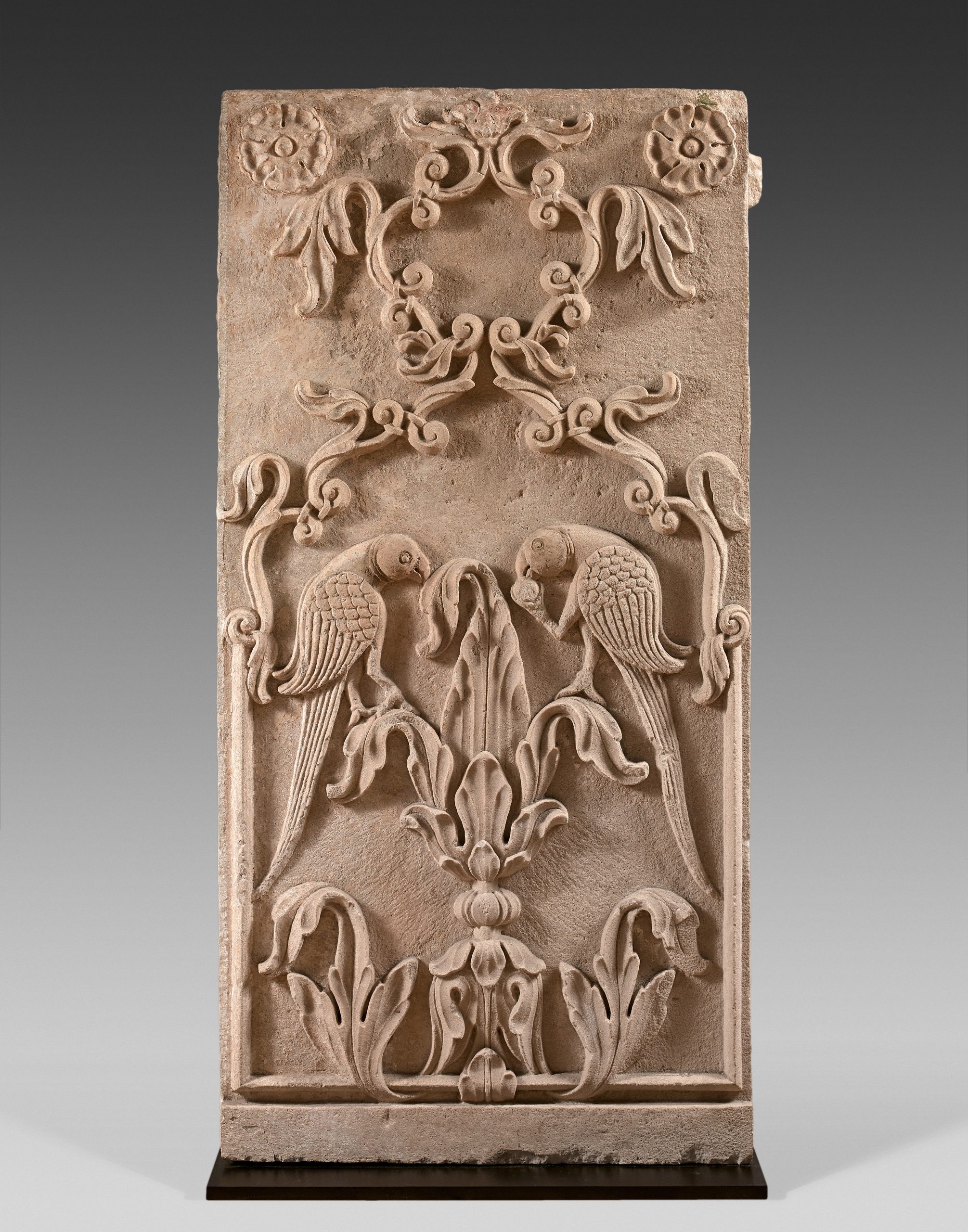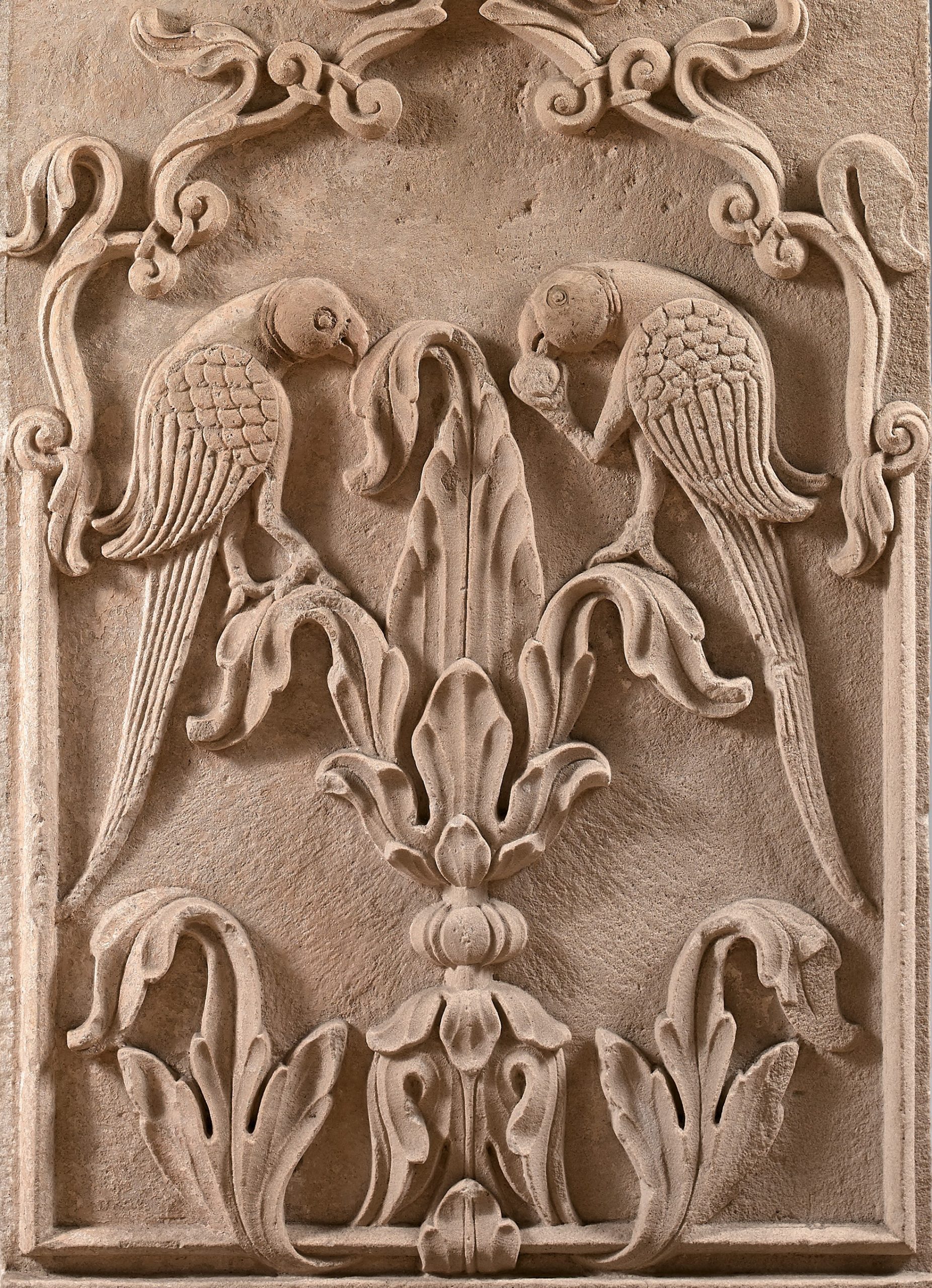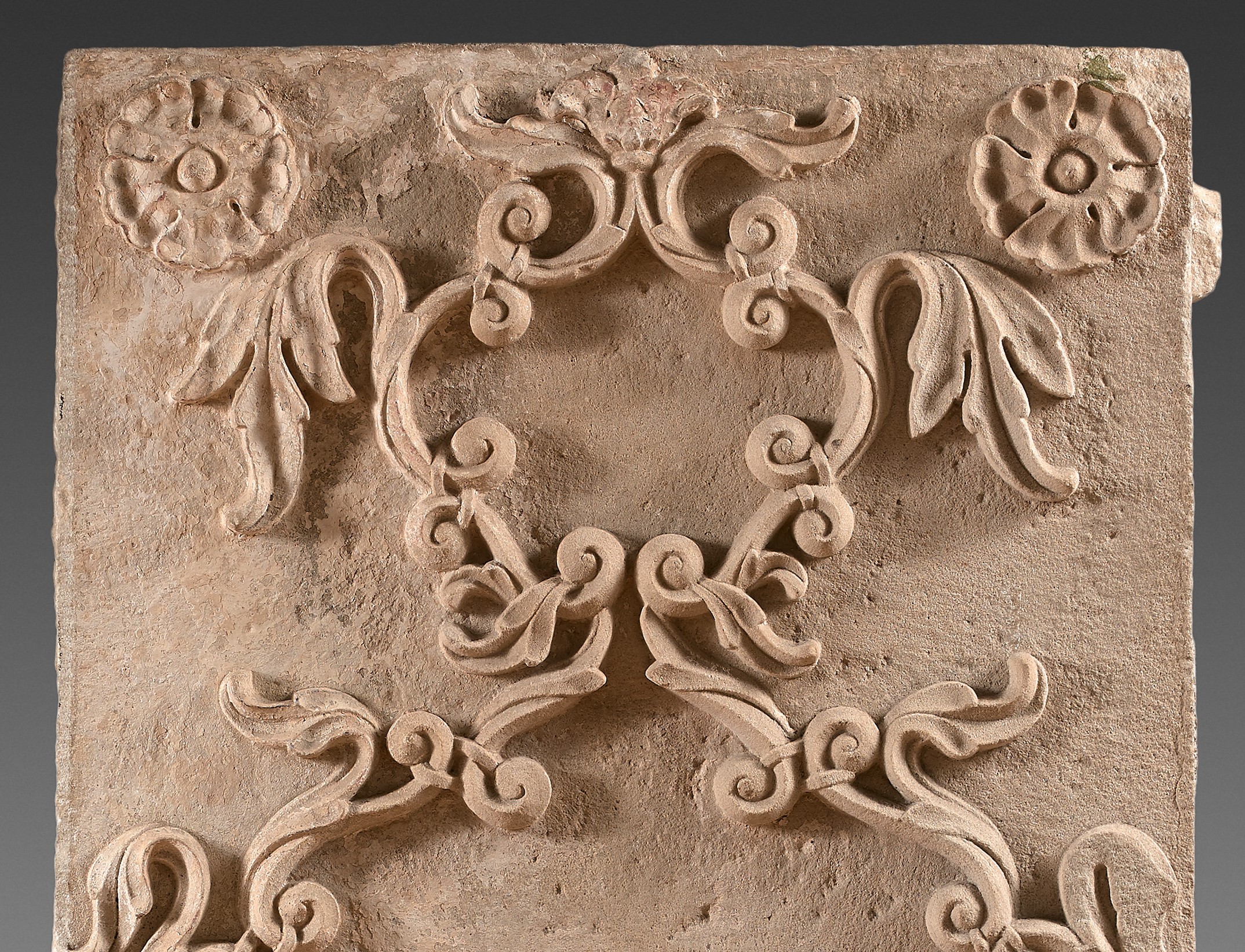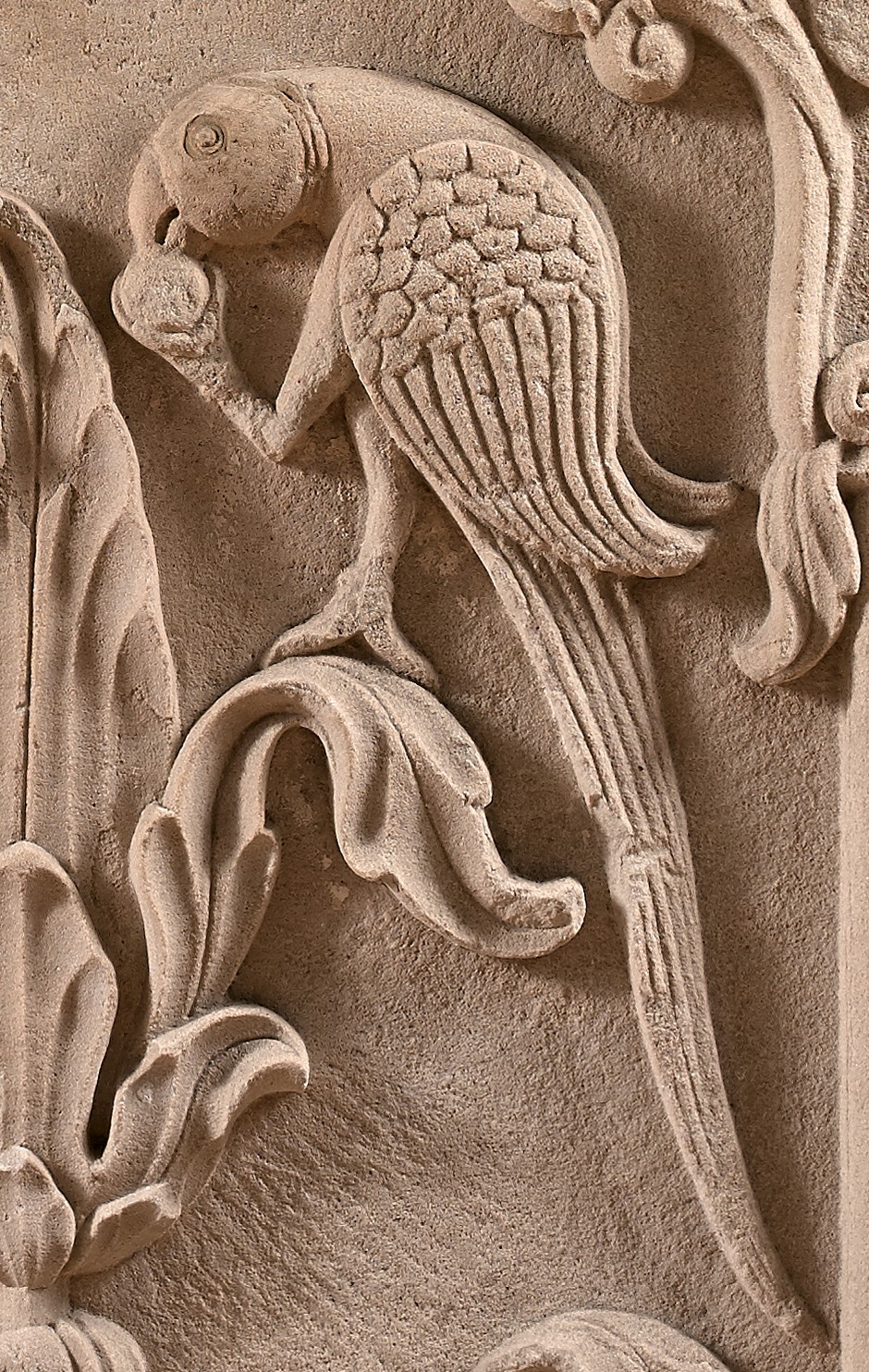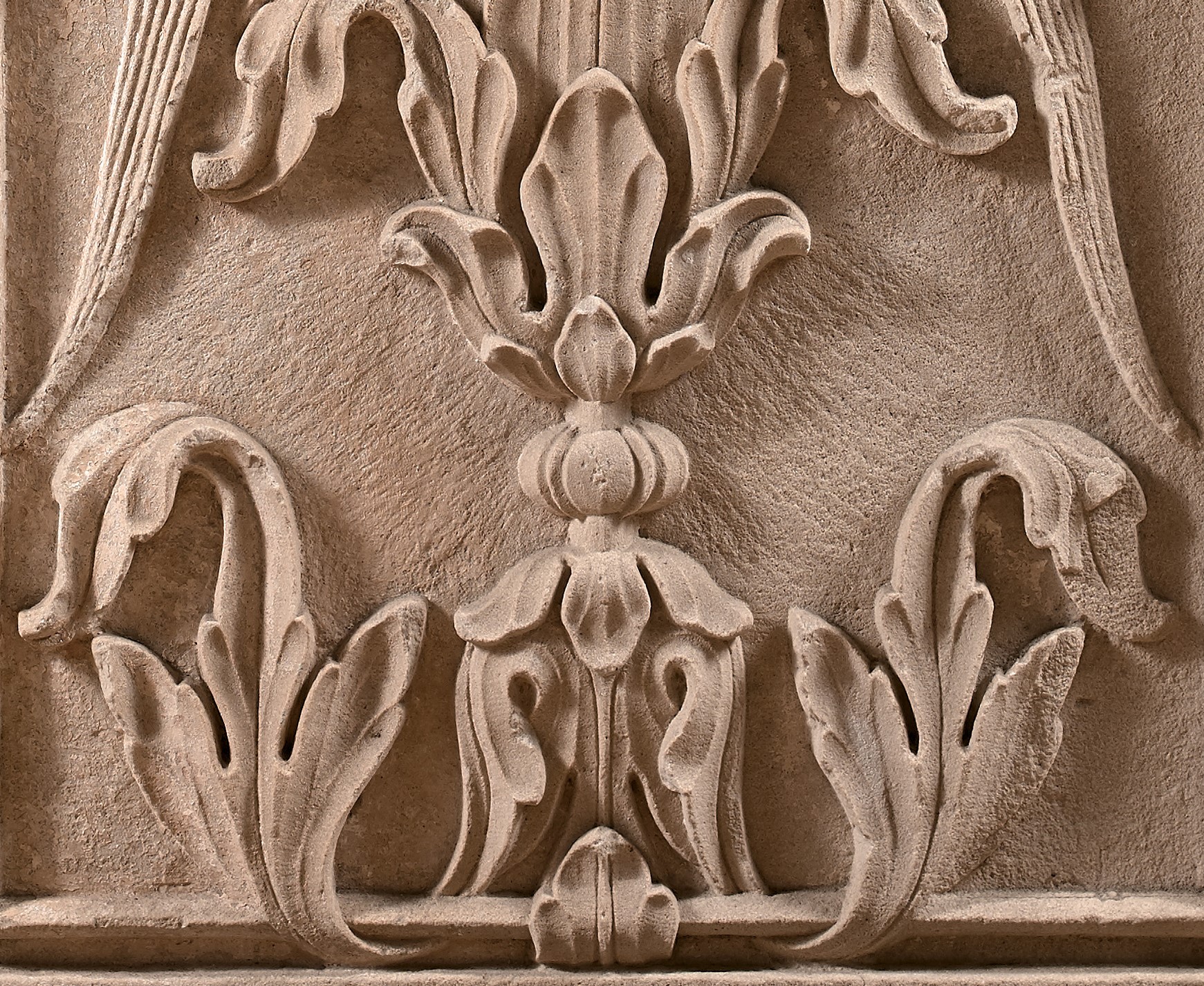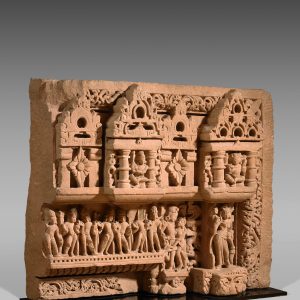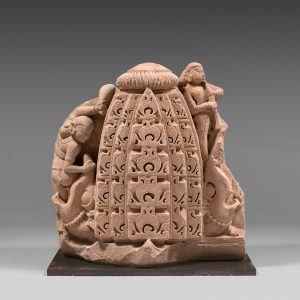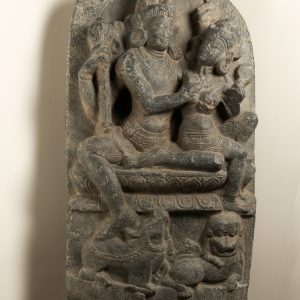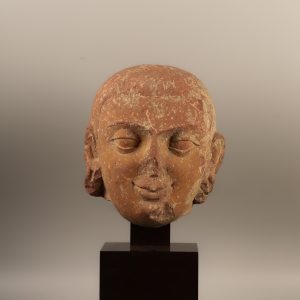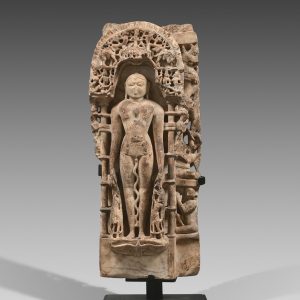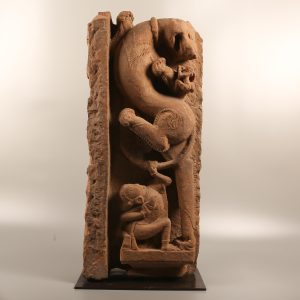Mughal architectural panel
23 000,00€
Sandstone
Central India
18th century, Mughal Empire
H. 101 cm or 39 ⅜ in
Description
The Mughal Empire (1526 – 1858)
This work is to be linked to the remarkable artistic production of the Indian subcontinent when it was under the domination of the Mughal dynasty. India was conquered by the Mughals as early as 1526, but it was during the reign of Akbar (r. 1556-1605) that the dynasty really established and painting and architecture flourished. His successors, Jahangir (r. 1605-1627) and Shah Jahan (r. 1628-1657), also had sumptuous reigns and further developed the arts. A great naturalism can be noted during this period. Mughal India is very open to exchanges and the resulting art combines Persian aesthetics with local craftsmanship and European images that circulate via engravings as early as the 16th century.
A panel for a palace
With the development of major construction programs during the reign of the Mughal rulers, the architectural decor plays a very important role. This large sandstone panel was part of a wall cladding and probably decorated the façade of a pavilion within a palace. The great skills of stone carving are evident here in the rendering of the finely carved decoration in low relief. Here we see a pair of graceful parrots perched on the leaves of a large, stylized acanthus, the one on the right standing on one leg only, using the other to carry a seed to its beak. This scene, surprisingly vivid despite its almost perfect symmetry, is set within a quadrangular frame that turns into an arch of scrolled foliage, elegantly curling up in the upper part of the relief. The panel is summoned in its spandrels by a pair of open rosettes.
Interest in nature, local influence and European herbaria
The floral naturalistic decoration triumphed during the reign of Shah Jahan and the decorative patterns of acanthus leaves and rosettes on this beautiful panel derive from the classical Mughal style that persists in palace architecture even after Mughal power began to weaken. This type of decoration seems to be partly influenced by the spread of European herbaria in the subcontinent, such as the famous Hortus Floridus of the Flemish Crispijn van de Passe. Some European inspiration can also be seen in the loops of the ornamental arch above the birds. Finally, if Islam is the religion of the Mughal Empire, a local interpretation is also possible here: the parrot is a symbol of love in Indian art. It is also the vehicle of Kama, the god of love, whose name derives from kam, which means desire or envy.
Provenance: Private collection, UK, acquired from the London dealer of Indian and Islamic art, Amir Mohtashemi, in 2005.

